Longest Walk: San Francisco to Washington DC
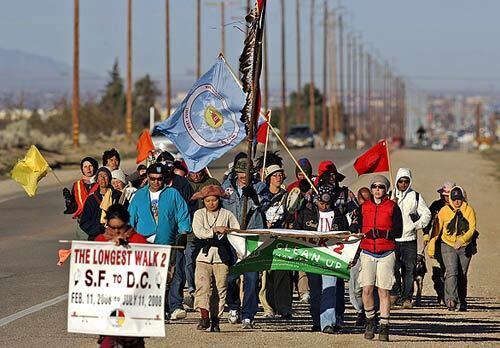
Commemorating the 30th anniversary of the 1978 Longest Walk, a civil rights march in support of Native Americans, participants on the South route pass through Apple Valley in San Bernardino County, Calif. The 4,400-mile walk through 11 states began Feb. 11 in San Francisco. It is scheduled to end July 11 in Washington, D.C. (Irfan Khan / Los Angeles Times)
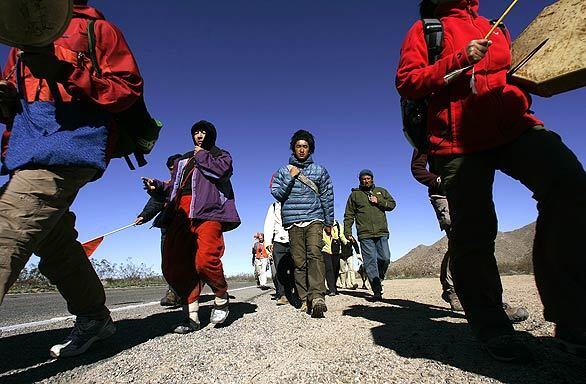
The purpose of the walk, according to organizers, is to bring attention on a national level to issues involving the environment, sacred Indian sites and the protection of human rights. (Irfan Khan / Los Angeles Times)

Jun Yasuda, 59, a Buddhist nun, offers a prayer during a break as other participants stand in a circle. (Irfan Khan / Los Angeles Times)
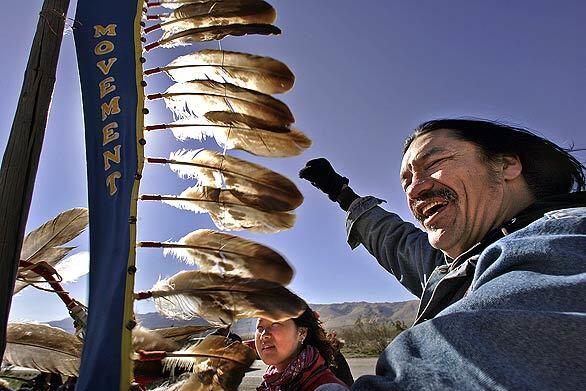
Nathan LeRoy, 47, is among participants traveling on Highway 18 in California’s Inland Empire. The Longest Walk 2 is an Indian spiritual walk designed to create awareness about the environment and promote positive change in the world, organizers say. It is open to people of all nations and cultures. (Irfan Khan / Los Angeles Times)
Advertisement
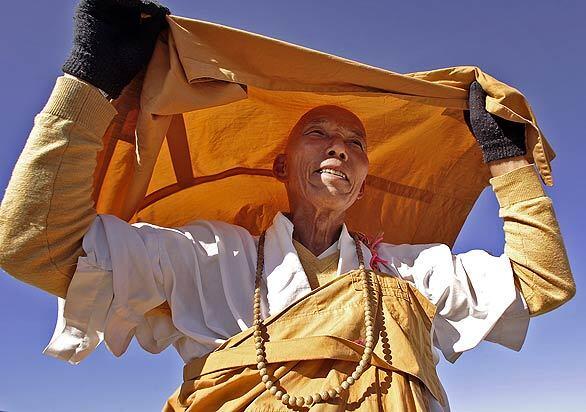
Gyoki Makino, 65, a Buddhist monk from Japan, takes a break along Highway 18 on the way to Washington, D.C. (Irfan Khan / Los Angeles Times)
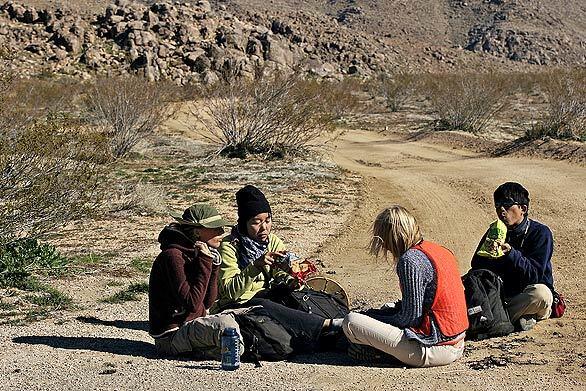
Longest Walk 2 participants take a break along Highway 18, near Apple Valley in Southern California. (Irfan Khan / Los Angeles Times)
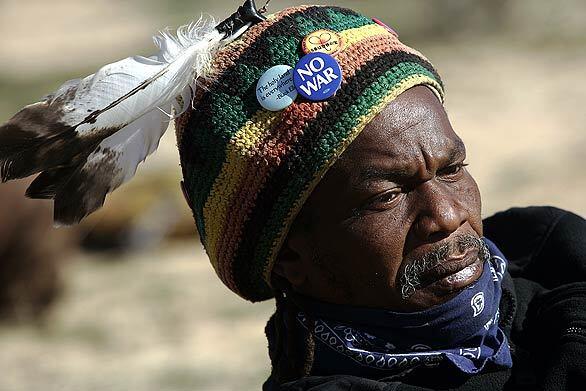
Peterjohn Schmidtknecht-Goodlette, 48, of San Jose, Calif., rests along Highway 18 in the high desert of San Bernardino County, Calif. More than 100 participants are registered to walk the 4,400-mile South route of the Longest Walk 2. They will be passing through 11 states on their five-month journey. (Irfan Khan / Los Angeles Times)
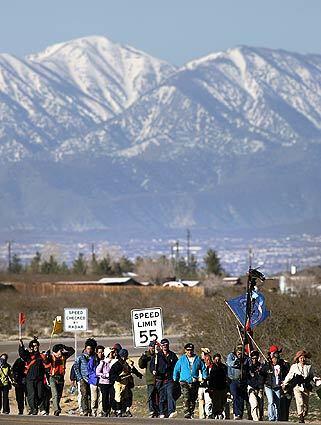
The Longest Walk 2 participants are passing through Southern California and then east through Arizona, New Mexico, Texas, Oklahoma, Louisiana, Mississippi, Alabama, Georgia, Tennessee and Virginia before arriving in Washington, D.C., on July 11. (Irfan Khan / Los Angeles Times)



